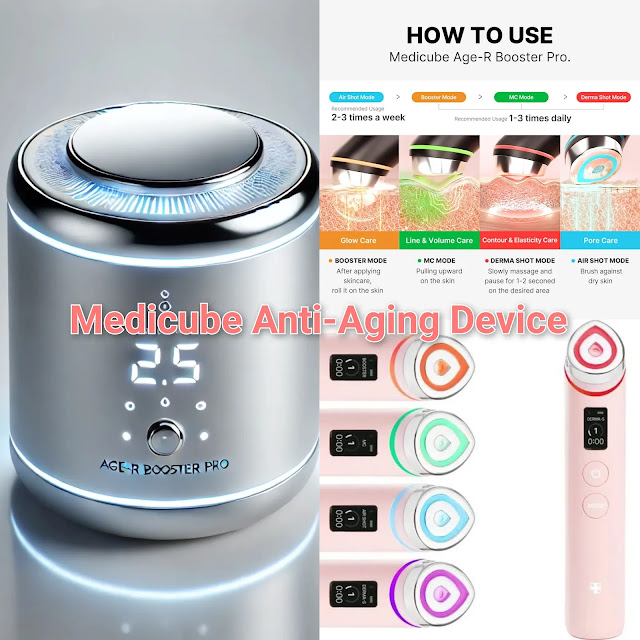🔓 Unlocking the Beauty Secrets of Glycerine
In the realm of skincare, there exists a powerful yet often overlooked ingredient that holds the key to unlocking radiant, hydrated skin: glycerine. Derived from plant oils or animal fats, glycerine boasts impressive moisturizing properties and a myriad of skin benefits. In this comprehensive guide, we’ll explore its origins, benefits, uses, and much more! 💧
If you're curious about how glycerine compares to another skincare ingredient called glycine, read our detailed guide: Glycerine vs Glycine – What’s the Difference?
📜 The Origins of Glycerine
Glycerine, also known as glycerol, has been used in skincare for centuries. 🌿 Ancient Egyptians and Greeks recognized its hydrating powers and used it to maintain youthful, supple skin. Today, glycerine remains a cornerstone in modern skincare formulations due to its unmatched ability to attract and retain moisture. 💦
💡 Top Benefits of Glycerine for Skin
- 💧 Intense Hydration: Glycerine is a humectant—it pulls moisture from the air into your skin, keeping it soft and plump.
- 🛡️ Strengthens Barrier: It fortifies your skin’s natural barrier against environmental stressors like pollution and harsh weather.
- 🌿 Soothing & Calming: Helps relieve irritation, redness, and inflammation. Ideal for sensitive skin!
- ❌ Non-Comedogenic: It won’t clog your pores, making it perfect for acne-prone skin. If you're unsure what this means, check out our guide on Comedogenic vs Non-Comedogenic Skincare.
- 🔄 Multi-Purpose: Use it in moisturizers, cleansers, toners, serums, and even DIY recipes!
🧴 How to Use Glycerine in Your Skincare Routine
- Moisturizers: Choose formulas rich in glycerine to lock in hydration all day. 💧
- Serums: Lightweight glycerine serums nourish deeply without feeling greasy. 💡
- Cleansers: Glycerine-based cleansers clean without stripping your skin. 🧼
- DIY Treatments: Make your own masks, toners, or lotions with pure vegetable glycerine. 🧪
🔬 The Science Behind Glycerine
Glycerine (glycerol) is a simple polyol compound with three hydroxyl groups. This allows it to attract and hold moisture. When applied topically, it forms a barrier that prevents water loss and keeps your skin supple and protected. 🧬
🧘 Therapeutic Properties of Glycerine
- 🔥 Anti-Inflammatory: Reduces redness and calms flare-ups from eczema, psoriasis, and dermatitis.
- 🛡️ Antioxidant: Neutralizes free radicals that cause aging, preserving skin youthfulness.
- 🧫 Antimicrobial: Prevents bacterial growth, making it effective for acne-prone skin.
🧴 Popular Uses of Glycerine in Skincare
- 🌊 Moisturizers: Boost hydration and improve skin texture.
- 🌸 Serums: Offer intense hydration with calming botanicals.
- 🧼 Cleansers: Cleanse gently without stripping moisture.
- 🧪 DIY Recipes: Add glycerine to aloe vera, rose water, or honey for custom treatments.
🛒 How to Choose the Right Glycerine Product
✅ Look for pure, plant-based glycerine (often labeled as vegetable glycerine).
✅ Ensure the product is free of harsh chemicals or synthetic fragrances.
✅ Choose formulations that complement your skin type and concerns.
🧪 Easy Homemade Glycerine Serum Recipes
1. Glycerine & Rose Water Hydrating Serum
- Ingredients: 1 tbsp glycerine, 3 tbsp rose water, 2 drops vitamin E oil
- Method: Mix all ingredients in a dropper bottle and shake well.
- How to Use: Apply 2–3 drops after cleansing, before moisturizer.
- Benefits: Deep hydration, pH balance, calming effect for sensitive skin.
2. Aloe Vera & Glycerine Cooling Serum
- Ingredients: 1 tbsp pure aloe vera gel, 1 tsp glycerine, 2–3 drops lavender oil (optional)
- Method: Mix until smooth. Store in a clean pump bottle.
- How to Use: Use in the morning under sunscreen or makeup.
- Benefits: Soothes irritated skin, hydrates, ideal for oily or acne-prone skin.
3. Glycerine & Green Tea Anti-Aging Serum
- Ingredients: 2 tbsp brewed green tea (cooled), 1 tsp glycerine, 2 drops jojoba oil
- Method: Mix and refrigerate in a glass bottle for up to 5 days.
- How to Use: Apply at night after toner, before your night cream.
- Benefits: Fights fine lines, hydrates, antioxidant-rich for youthful skin.
🎯 Conclusion: The Secret to Glowing Skin
Glycerine is your humble skincare superhero. 🌟 From hydration and healing to soothing and protecting, it offers a full spectrum of benefits for every skin type. Whether you include it through a store-bought product or a homemade recipe, glycerine can transform your skincare routine. Embrace it—and let your glow begin! ✨
📌 Disclaimer:
This article is for informational purposes only and does not replace professional medical advice. Always patch-test new products and consult a dermatologist for any skin concerns. 🩺
















.jpg)


Comments
Post a Comment